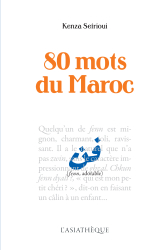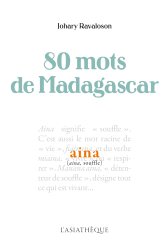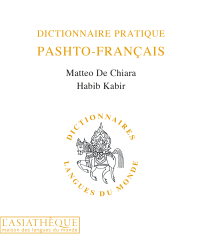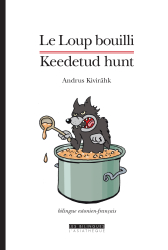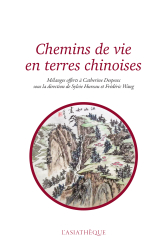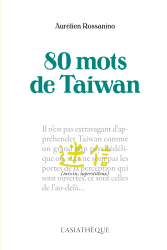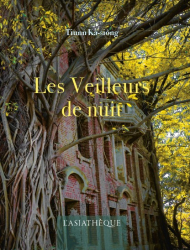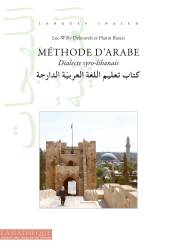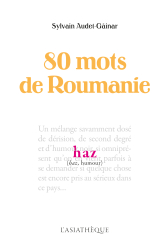The textual supports from Alain Germain's 1994 production at the Rond-Point/Renaud-Barrault on the occasion of the Bicentennial of the School of Oriental Languages (l'École des langues orientales). This book by Alain Germain includes a selection of texts presented in both their original writing system and in their French translation. All translations are done in collaboration with Igor Bosc, Eloi Ficquet and David-Pierre Marquet, at the time students of Langues O'.
CONTRIBUTORS' BIOGRAPHIES
Alain Germain

Alain Germain was born on February 16, 1948.
After having followed musical and choreographic studies, Alain Germain turned to architecture. He graduated from the National School of Decorative Arts and the National School of Fine Arts. Sponsored by Arthur Rubinstein and Béatrice Casadesus, he is a laureate of the Vocation Foundation. In 1972, he founded his own company, whose originality lies in an alloy of genres which makes it possible to soften the borders between the different disciplines such as dance, song, theater, plastic arts and music, and presents numerous shows in the whole world. Along with his role as a creator, he has been invited several times as a professor by the dance, theater and music departments of New York University, the French House of Columbia University. He has also taught at the University of California, Los Angeles California Institute of Arts, Pennsylvania University, the Chartreuse de Villeneuve-lès-Avignon, the Sorbonne and has led conferences for the universities of Aix-en-Provence, Yale ...
TABLE OF CONTENTS
Préface d'André Bourgey (Preface by André Bourgey)
Préface de François de Labriolle (Preface by François de Labriolle)
Alain Germain et la Compagnie (Alain Germain and the Company)
Avertissement au lecteur (Warning to the reader)
Prologue et début de la 1e scène (Prologue and start of the 1st scene)
Carte du monde – localisation des langues (World map – localisation of languages)
Suite de la 1e scène (Continuation of the 1st scene)
Les langues par ordre d'apparition, colonne de gauche, puis colonne de droite (le chiffre entre parenthèses donne l'ordre alphabétique et se retrouve sur la carte p. 16-17 et dans les références p. 183) :
(The languages in order of appearance, left column, then right column (the number in parentheses gives the alphabetical order and is found on the map p. 16-17 and in the references p. 183)):
Maori (43) p. 24-25
Kashmiri (35) p. 26-27
Français (21) p. 28-29
Tibétain (70) p. 30-31
Anglais (3) p. 32-33
Bengali (10) p. 34-35
Swahili (63) p. 36-37
Lao (38) p. 38-39
Yiddish (77) p. 40-41
Grec moderne (24) p. 42-43
Oromo (48) p. 44-45
Chinois moderne (15) p. 46-47
Allemand (1) p. 48-49
Pasthô (50) p. 50-51
Ukrainien (73) p. 52-53
Tagalog (65) p. 54-55
Mongol (45) p. 56-57
Hindi (29) p. 58-59
Coréen (16) p. 60-61
Waray (75) p. 62-63
Arabe (4) p. 64-65
Zulu (69) p. 66-67
Chinois classique (14) p. 68-69
Bulgare (13) p. 70-71
Indonésien (31) p. 72-73
Persan (52) p. 74-75
Bâlois (7) p. 76-77
Peul (53) p. 78-79
Penjabi (51) p. 80-81
Nahuatl (46) p. 82-83
Gujarati (26) p. 84-85
Inuktitut (32) p. 86-87
Malgache (42) p. 88-89
Tigrinya (71) p. 90-91
Croate (17) p. 92-93
Thaï (69) p. 94-95
Kinyarwanda (37) p. 96-97
Basque (9) p. 98-99
Amharique (2) p. 100-101
Italien (33) p. 102-103
Bambara (8) p. 104-105
Hongrois (30) p. 106-107
Sanskrit (59) p. 108-109
Quechua (56) p. 110-111
Serbe (60) p. 112-113
Hébreu (28) p. 114-115
Polonais (54) p. 116-117
Tamoul (67) p. 118-119
Haoussa (27) p. 120-121
Portugais (55) p. 122-123
Wolof (76) p. 124-125
Espagnol (19) p. 126-127
Guarani (25) p. 128-129
Japonais (34) p. 130-131
Lituanien (40) p. 132-133
Suédois (62) p. 134-135
Népali (47) p. 136-137
Roumain (57) p. 138-139
Malayalam (41) p. 140-141
Géorgien (23) p. 142-143
Tchèque (68) p. 144-145
Aymara (6) p. 146-147
Somali (61) p. 148-149
Vietnamien (74) p. 150-151
Duala (18) p. 152-153
Arménien (5) p. 154-155
Tamachek (66) p. 156-157
Finnois (20)p. 158-159
Gallois (22) p. 160-161
Marathi (44) p. 162-163
Russe (58) p. 164-165
Ourdou (49) p. 166-167
Berbère (11) p. 168-169
Tadjik (64) p. 170-171
Turc (72) p. 172-173
Birman (12) p. 174-175
Khmer (36) p. 176-177
Yoruba (78) p.178-179
Lingala (39) p. 180-181
Final : Tico Tico
Épilogue (Epilogue)
Références (References)

